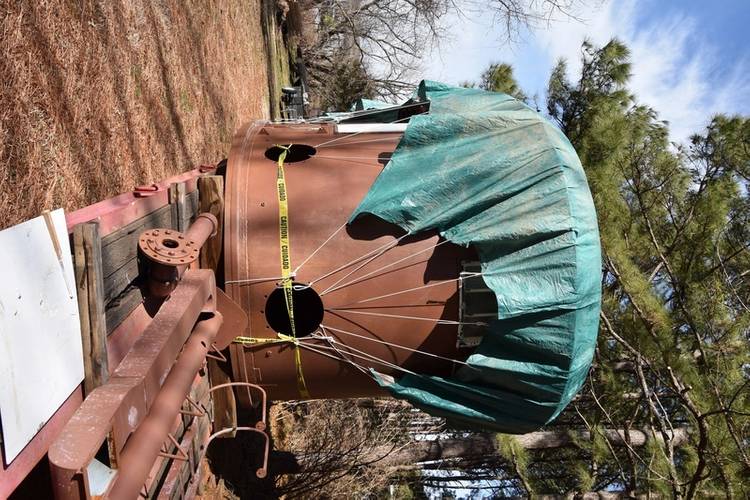CBMM Restores tug Huntington’s Pilot House
The pilot house of the tug Huntington recently returned to the Chesapeake Bay Maritime Museum after extensive metal refurbishing and repair.
All restoration work was performed by E. H. Harvey Metal Working Co. of Easton, Md., and included sandblasting the exterior, removing lead paint, and preparing the exterior for final painting. The pilot house is currently stored in one of CBMM’s off-campus locations, in anticipation of restoring Huntington’s wood trim and interior during the warmer weather.
With generous support from Chesapeake Shipbuilding, McAllister Towing, Newport News Shipbuilding (NNS) apprentice alumnus Hudson Haile, and individual donors, the pilot house and captain’s quarters of the once steam-powered screw tug Huntington—complete with furnishings and fittings—became part of CBMM’s collections on June 15, 2010.
“Tugs are and have always been a vital part of maritime transportation, especially maritime trade along the coast and within America’s inland waterways, like the Chesapeake Bay,” said CBMM Chief Curator Pete Lesher. “The handsome Huntington pilot house will help share the stories of the Chesapeake Bay as a highway, when it later becomes part of a Chesapeake Bay transportation exhibition at CBMM.”
NNS owned Huntington (NNS Hull #356) until 1990. Built almost entirely by apprentices for the shipyard’s own use, the vessel’s beam was increased by one foot over the 28-foot dimension previously used for her near-sister, C&O tug W.J. Harahan; also built at NNS. Considered the finest tugboat of her time in Hampton Roads, Huntington’s crew referred to her as the “Queen of the Harbor.” She had only three Masters during her time of service at NNS: Captain R. A. Callis, Captain M. L. Ambrose and Captain Reggie Hunley.
With a large American flag flown at her stern, Huntington was christened at a gala launching on October 11, 1933. The tug’s sponsor and shipyard president’s granddaughter, seven-year-old Anne Gordon Ferguson, smashed the ceremonious champagne bottle against the tug’s bow bitt, despite prohibition. Huntington reached top speeds of 10 knots during sea trials and was often noted as quieter, more comfortable, and faster than many other tugboats at the time.
Huntington had accommodations for a crew of five, with traditional tugboat craftsmanship seen in the finely-finished vertical tongue and groove wood paneling in her living spaces and pilot house. The pilot house originally sported a hand-carved gilded eagle with a five-foot wing span, which contributed to the tug’s appearance as a showboat. In 1950, she underwent a major overhaul, including the replacement of her original coal-fired boiler and reciprocating steam engine with a 1200 HP diesel engine. At that time, the gilded eagle and brass steam whistle were also removed and donated to the Mariners’ Museum in Newport News, Va.
In 1992, Huntington was sold to Bay Towing Corporation, and worked towing barges up to Baltimore. She was later sold to Rover Marine in 1996, when she was converted from a workboat to a floating museum and placed on the National Register of Historic Places. Ownership transferred to the Palm Beach Maritime Museum in 2007 with hopes of restoration that were never realized. In spring 2010, Huntington was scrapped by Salonen Marine, Inc., of Jacksonville, Fla., but the pilot house was salvaged, thanks primarily to the efforts of Hudson Haile, and donated to CBMM.
The Chesapeake Bay Maritime Museum is a non-profit educational organization dedicated to preserving and exploring the history, environment, and culture of the entire Chesapeake Bay region, and making this resource available to all. Every aspect of fulfilling this mission is driven by CBMM’s values of relevancy, authenticity, and stewardship, along with a commitment to providing engaging guest experiences and transformative educational programming, all while serving as a vital community partner.


















